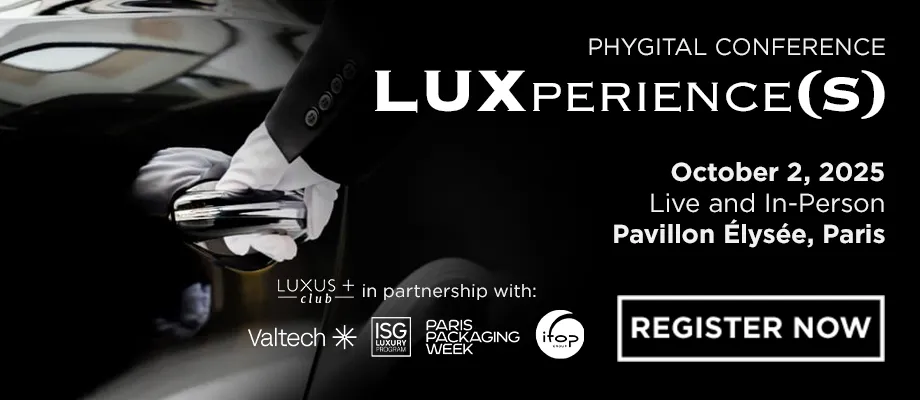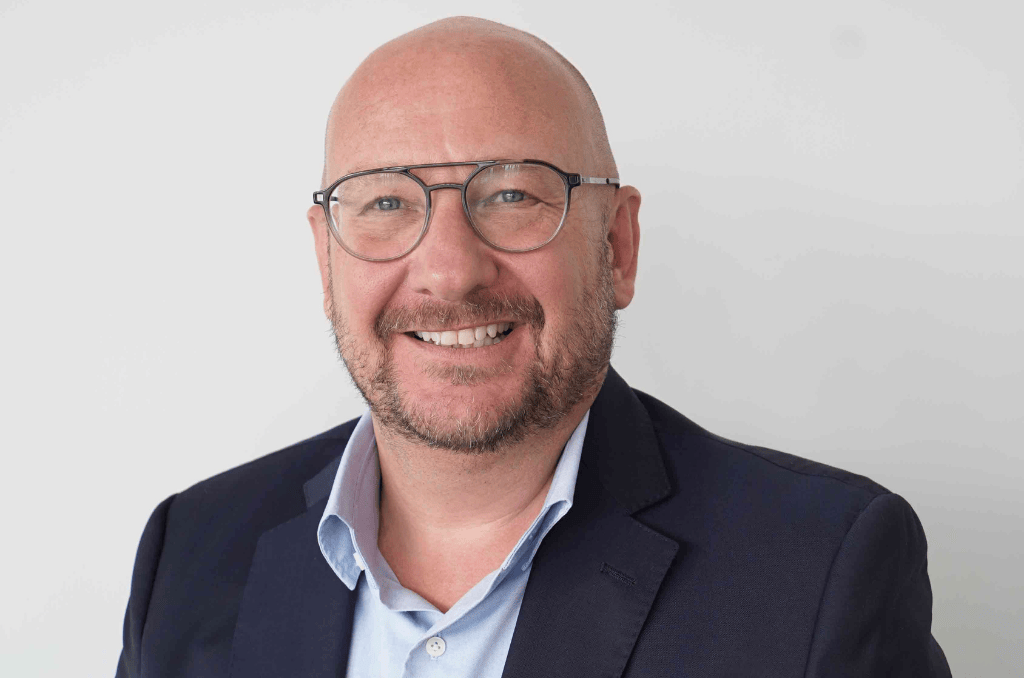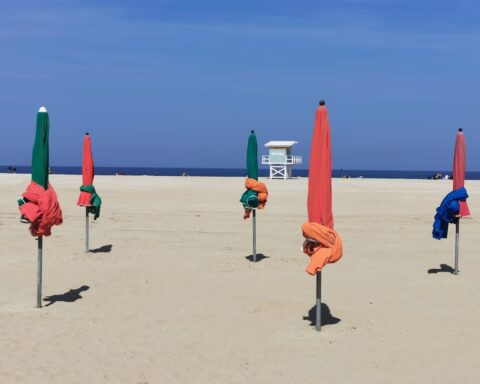LUXUS MAGAZINE was present in Paris at the Salon du Made in France, which took place from November 8 to 11, 2024 at Porte de Versailles. On this occasion, we met Marc Brunel, General Manager of Alliance France Cuir, the French trade confederation dedicated to the leather industry.
This month, the Salon du Made In France (MIF) at Porte de Versailles hosted an immersive stand punctuated by numerous events, showcasing the leather industry, its creativity and its craftsmanship.
A co-product of the agri-food industry, leather is a natural material that embodies the logic of a circular economy. Every year, the French leather industry recycles more than 160,000 tonnes of hides – twenty times the weight of the Eiffel Tower.
The 75 m²“Made In Cuir” area at the heart of theSalon MIF’s fashion and accessories section was managed by Alliance France Cuir, the French trade confederation dedicated to the leather industry, founded in 1948 and formerly known as the Conseil National du Cuir.
Alliance France Cuir is the voice of 21 professional federations, united by a passion for leather and its skills of excellence. Here,we meet its General Manager, Marc Brunel, to discover the secrets of a material that never ceases to fascinate.
LUXUS MAGAZINE: We’re on the Made in Cuir stand at the Salon du Made in France. Why did Alliance France Cuir decide to take part in this trade show for the general public?
Marc Brunel: The reason why Alliance France Cuir and the French leather industry are represented on the Made in France stand is to promote, explain and raise awareness among end customers of the value of our material and, more generally, of our entire value chain. Leather is an extraordinary material that has existed for tens of thousands of years, and has never ceased to evolve over time to meet the tastes and expectations of the times. France possesses real know-how in this field, since very high-end leather goods are made in our country. Leather is also used as the basis for many everyday items: you’ll find it in your shoes and leather goods, of course, but also in your watch straps, your sofa and on your clothes. It’s an extremely versatile material, polymorphous but always of excellence.
In this Made In Cuir area, we want to show the intrinsic qualities of leather, its resistance, durability and reparability, but also explain the trades that work with this material. In many cases, these are little-known trades in which craftsmanship has a special, but not exclusive, place: some even have their origins in industry. These are trades where craftsmanship and industry fit together perfectly to produce extremely elaborate, luxurious and desirable products.
And then in this value chain, once the product has been manufactured, it has to be distributed. That’s why Alliance France Cuir and all its members are interested in the entire value chain, right through to distribution. It is in these physical stores that human relations and advice are of prime importance. At Alliance France Cuir, we insist on this territorial network of stores that distribute our leather goods. This in-store customer experience sets us apart from a product sold in a rather commoditized way on the Internet. In a physical boutique, the sales advisor can fit the buyer’s shoes, advise on comfort and durability, or simply collect the product at the end of its life to help repair it and find a good shoemaker close to the buyer. Within our association and our confederation, repairers, our friends the cobblers, will give a second life to the product. That’s why we insist on going right to the end of the value chain. Leather is, par excellence, a material that lasts and can be repaired. We want to make the general public aware of all these values that we support.
LUXUS MAGAZINE: When it comes to raising awareness, you use a number of very entertaining formats. Could you describe them for us?
Marc Brunel: We designed the Made In Cuir stand to be very didactic. We invite visitors to follow the path of the material, from the collection of skins to the act of buying. So we have a first animation where you discover what a hide is and where it comes from. We discover what an animal by-product is, an obscure notion for the general public. Then we discover the different types of leather we’ll be able to touch in our cuirothèque: calf, lamb, reptile, ostrich, fish (shagreen)… We can apprehend them in shimmering or more classic colors. Taking an interest in leather is a sensory experience in itself.
Then it’s on to creation and styling to unravel the mysteries of the different trades. What is modeling, or how do you shape a bag, for example, using highly technical computer tools and software? We then try to introduce visitors to craftsmanship and industry through workshops. What does a shoe or leather goods factory look like today? As a final experiment, we’ve even reproduced the store area. You’ll learn how to put on shoes, how to measure your foot in a shoe, and how to judge the fit and arch of a heel.
LUXUS MAGAZINE: Last year, you set up a similar course with short quizzes. At the previous Made In France show, how did the public react to the stand, and what was the impact?
Marc Brunel: If I had to choose just one figure, it would be that of the leather cow figurine workshop. In 2023, over 3,000 cows were made over the 4 days. Behind the fun aspect of the workshop, the aim is to introduce visitors to the sewing trades through knot-tying and cutting techniques. And the stand is always busy. Last but not least, it’s a show that’s doing extremely well, with over 100,000 visitors, all of whom are keen to see Made in France and thus local production. Our theme attracts a lot of visitors. It makes sense and gives meaning. We’ve had pretty good feedback, particularly from the Do it yourself workshops. A lot of visitors to the event ask us about career changes, such as leaving office jobs to embrace handicrafts, which make all the more sense today.
LUXUS MAGAZINE: You mentioned the questions that customers can ask. What are the sources of fascination with leather?
Marc Brunel: I’d say there’s probably a lack of understanding about leather. First of all, we explain to visitors that it’s a product of the agri-food industry, and that animals are bred for meat and milk. And the first question often asked is whether animals are killed for leather. This is obviously not the case. So we’re re-explaining the subject and putting it into context. So there’s already an initial phase of astonishment. Then the questions turn to our hundred or so little-known leather-related professions. Of course, the profession that most people dream of is that of stylist… except that places are few and far between. On the other hand, there are real needs in other key professions, such as manufacturing. Such is the case for cutters. This profession requires great dexterity in order to cut leather judiciously, i.e. according to its appearance and size. Sewing is also a highly sought-after profession. Curiosity about the repair trades was reawakened a little over a year ago, when the French introduced the repair voucher, which allows you to repair your product at your shoemaker’s. We started to bring out our repair vouchers again, and they were very popular. People started taking their old shoes out of the closet, telling themselves that not only can they have them repaired, but that they’re also getting help.
LUXUS MAGAZINE: If your brochure is anything to go by, the idea behind leather craftsmanship is to combine traditional techniques with cutting-edge innovation. What does this mean?
Marc Brunel: Obviously, our competitive advantage, which is recognized the world over, is our know-how. Knowing how to work the product is the basis of our industry and our craftsmanship. But obviously, when it comes to making shoes to bags, we industrialize our production tools while preserving our craftsmanship. And the logic is that craftsmanship feeds the production tool.
But this tool needs to evolve. That’s why the trade is integrating more and more technologies and software. To name but a few, there’s DTP (Computer Aided Programming) and CAD (Computer Aided Design), but also 3D printing of products and prototypes. To avoid using too many materials and generating waste, we prefer to use 3D to produce prototypes. It’s less costly both in terms of materials and time. So we’re going to use new technologies and introduce a certain modernity into the craft. This trend is also reflected in the machines we use. For example, cutting can be done by hand, but also using laser or cutter cutting machines. In fact, we have a whole range of technology integrated into our production tools. This is where the genius of design and industrialization lies, and it’s also at the heart of our business. Artificial intelligence also plays a key role in assisting designers to come up with new products. In the future, artificial intelligence will play a major role in the design of certain products. The aim is to optimize both materials and production costs, and to make products that are ever more competitive, but in accordance with the rules of the art, which is the very essence of our industry.
LUXUS MAGAZINE: How do you see the leather industry developing in the short to medium term?
Marc Brunel: We’ve had ten very good years, including during Covid. In fact, the sector has come out of this difficult period rather stronger. We’re still the world’s fourth-largest exporter of leather products. So we have an extremely important place on the international stage, even if the economic conditions of our main customers – China and America – have slowed down considerably. The industry is currently experiencing some difficulties. All the players involved see room for improvement by increasing quality and traceability, of which France is a leader. If quality, traceability and transparency all come together, then the product can only get better. The players are all perfectly aware of this, and have been working towards it for a long time. However, I believe that we are witnessing an acceleration of this phenomenon. We’re moving towards extreme excellence to differentiate ourselves in a market that’s currently quite turbulent.
LUXUS MAGAZINE: How does the French leather industry view Donald Trump’s election? Have any players expressed concern about the risk of customs duties?
Marc Brunel: No, we’re mainly in a phase of astonishment and expectation. Donald Trump was already elected in 2016. His political choices are America’s political choices. For us, the United States remains an important customer. That said, the appetite for made-in-France products, and especially for French brands, remains very strong in North America. This is obviously linked to their local economy and the financial health of their economy. But we don’t see any direct threat at the moment: the more exceptional a product we make, the more desirable it will remain. And I think it’s this excellence that we have to strive for, and that we fight for every day.
See also > Made in France luxury bags: patience and length of time
Featured Photo: Alliance France Cuir














